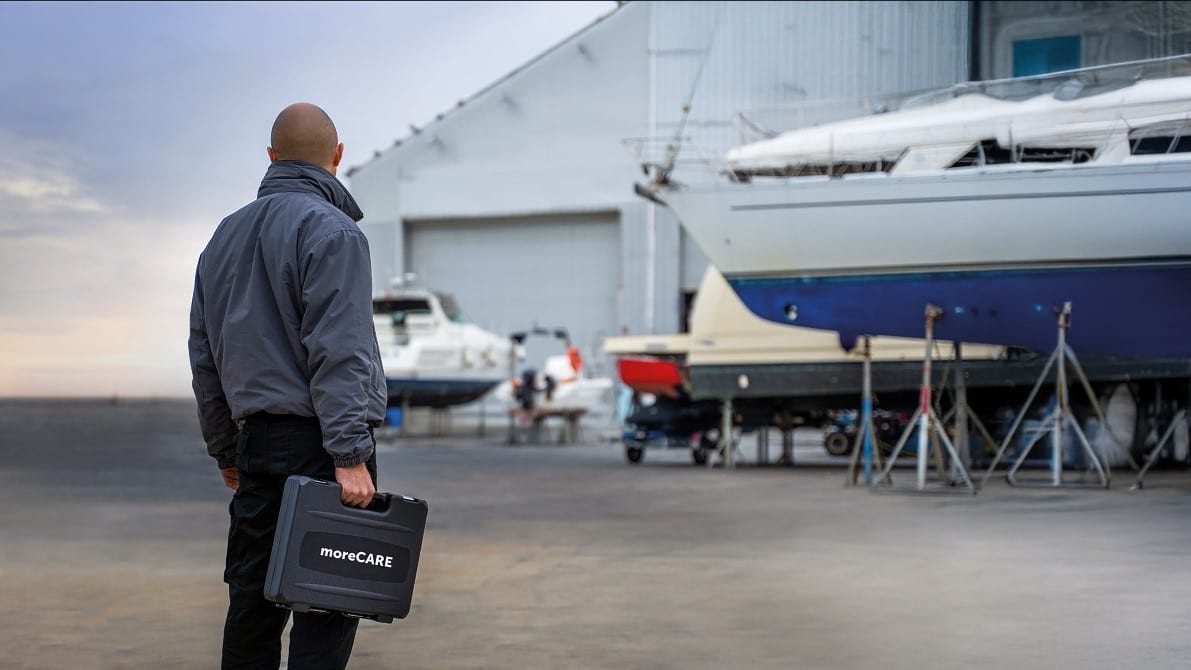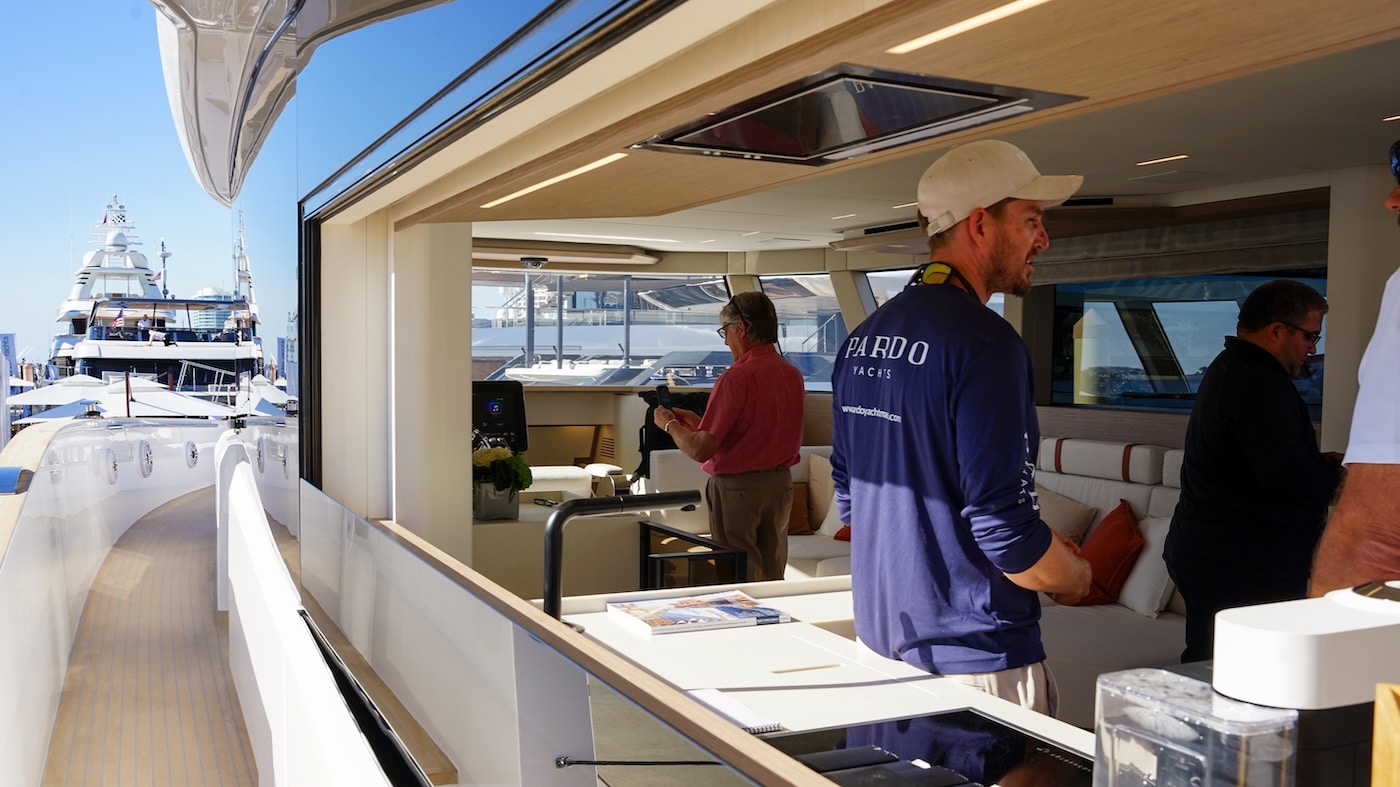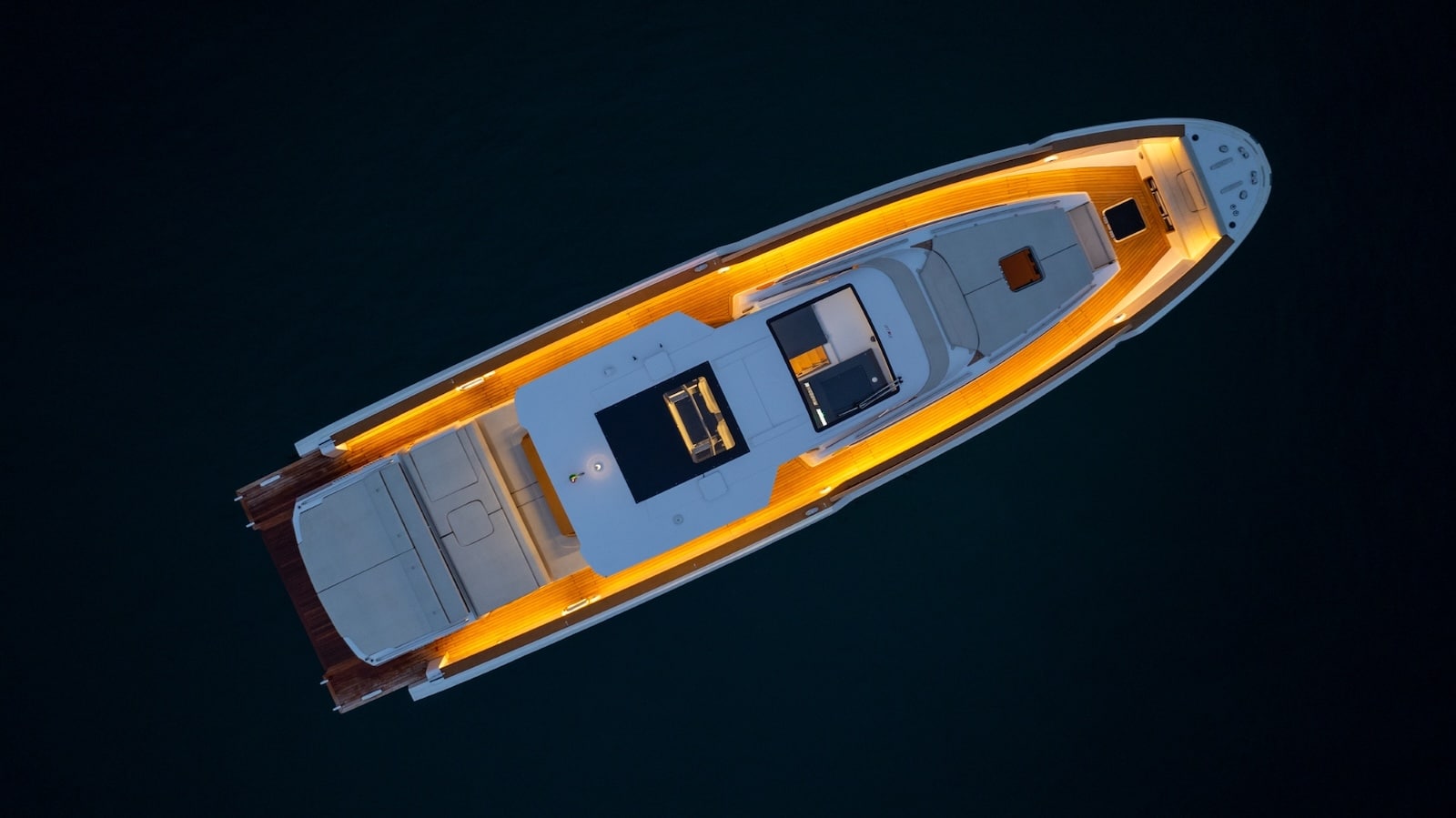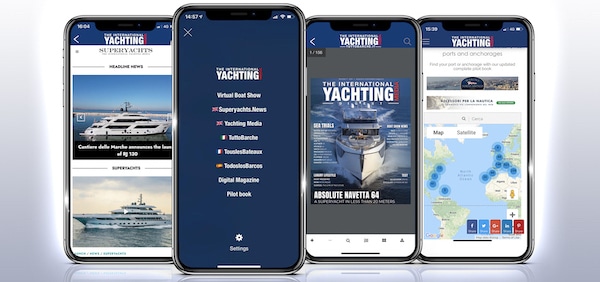A proper use of trim has some important beneficial results. A properly trimmed hull, in fact, sails perfectly balanced, faster, safer and with reduced fuel consumption.
Unfortunately, however, this instrument is often overlooked by recreational sailors. It’s a vast subject which often lends itself to considerations concerning the different sailing conditions, first and foremost the sea state.
First of all, let’s establish the effects caused by the use of trim. In the full up position, the outboard is in “positive trim“, which means that it exerts a downward thrust which makes the bow raise. On the contrary, in the full down position, the outboard is in “negative trim“: in this case, the engine is lowered and its upward thrust will make the bow lower.
Bearing in mind this general rule, what we have to understand is when and how to use positive or negative trim. To make it more practical, we can establish some other general rules to be interpreted according to the specific conditions we’ll be experiencing at that time.
When we select a positive trim, we lighten the load on the bow , reducing the amount of bottom in contact with water and, consequently, friction, from the middle of the boat up to the stern. The result is higher speed together with lower consumption compared to the conditions generated by negative trim. The latter, in fact, makes the boat sail with a greater amount of bottom in contact with water, greater friction, less speed and higher consumption. Moreover, with a overloaded bow, that is with too negative trims, the hull will be more exposed to the effects of waves.
A habit we’ve picked up from our experience is to start with negative trims (if not 100%, at least 50%) and then to adjust their position according to our needs. That’s certainly not a rule but just our personal choice.
Now, let’s try to apply these rules to practical conditions which, as we’ll see, introduce some variables. If, for example, we’re sailing in about one-metre-high waves and in a windy day, we must find a compromise. According to the theoretical rule, we should keep the hull with the bow raised, that is with positive trim, in order to reduce the surface exposed to the wave effects. But we also have to consider wind action, especially in case of strong headwind. In this case, a 30% negative trim represents a good compromise.
With a lower wave (about 0.5 m) and less wind, we can select a “neutral” trim in order to reduce both the amount of surface in contact with water and friction.
Finally, if sea is flat, we can choose even a 100% positive trim. The wet surface will be extremely reduced and we’ll obtain the terminal velocity at the same engine revolutions but with lower fuel consumption.
As we’ve already said, these are just some general rules predicated on the intention of outlining the effects of trims.
Anyway, after due consideration related to the type of hull we have and the sea-weather conditions we find, the most important thing is to bear in mind the effects of trim and use it.





























One Response
Wow, I had no idea that trim played such an important part when it came to outboard motor boats. However, I can definitely understand why it would if the trim really can effect the balance of the boat. For example, a positive trim could lead to a less amount of the bottom of the boat contacting the bottom of the water, leading you to be able to move faster.